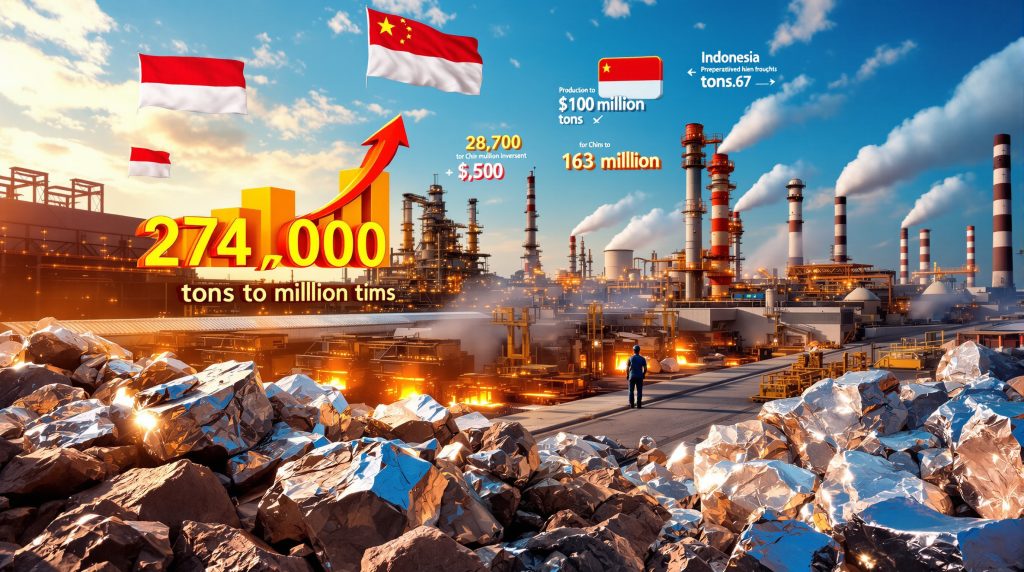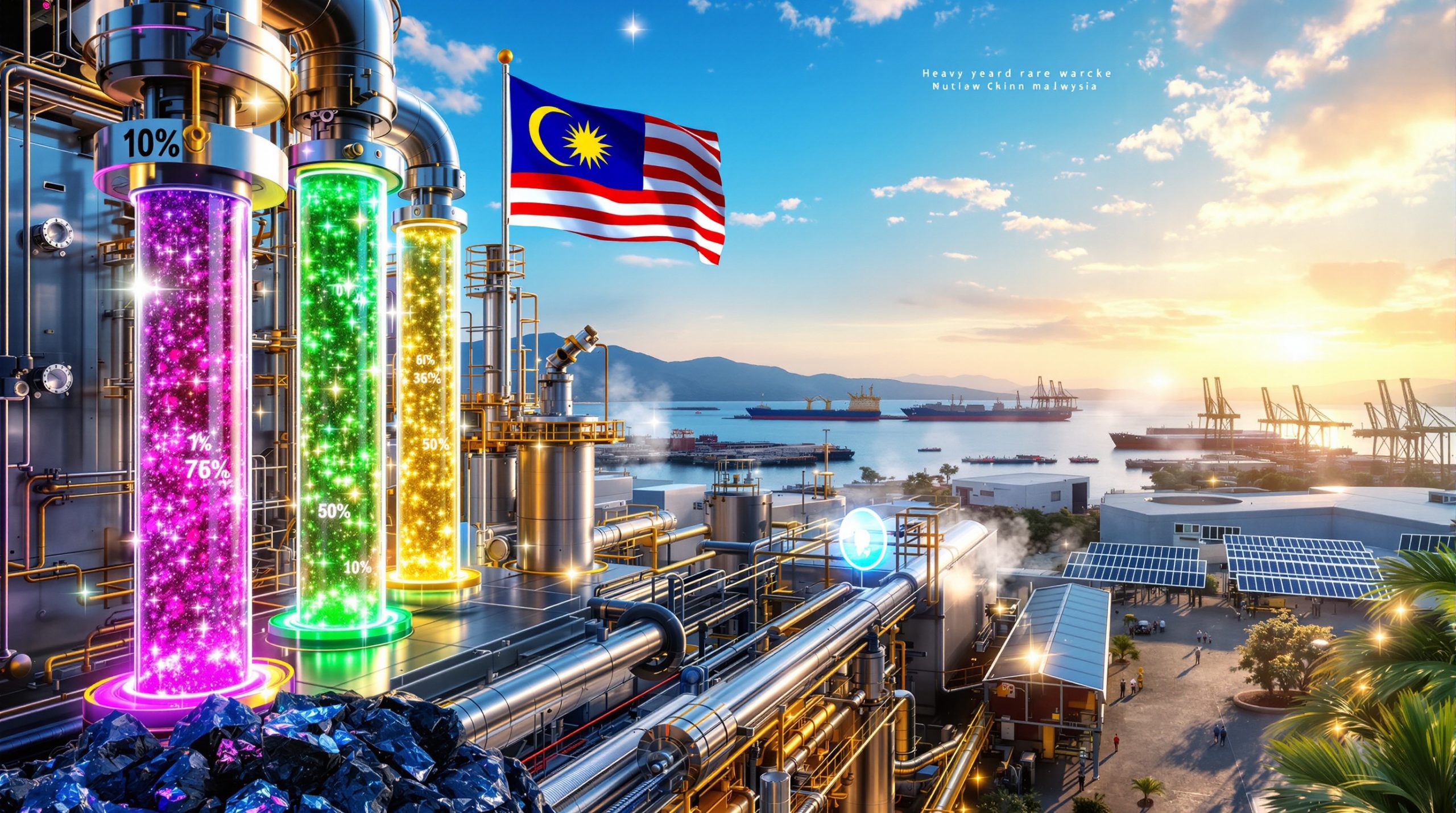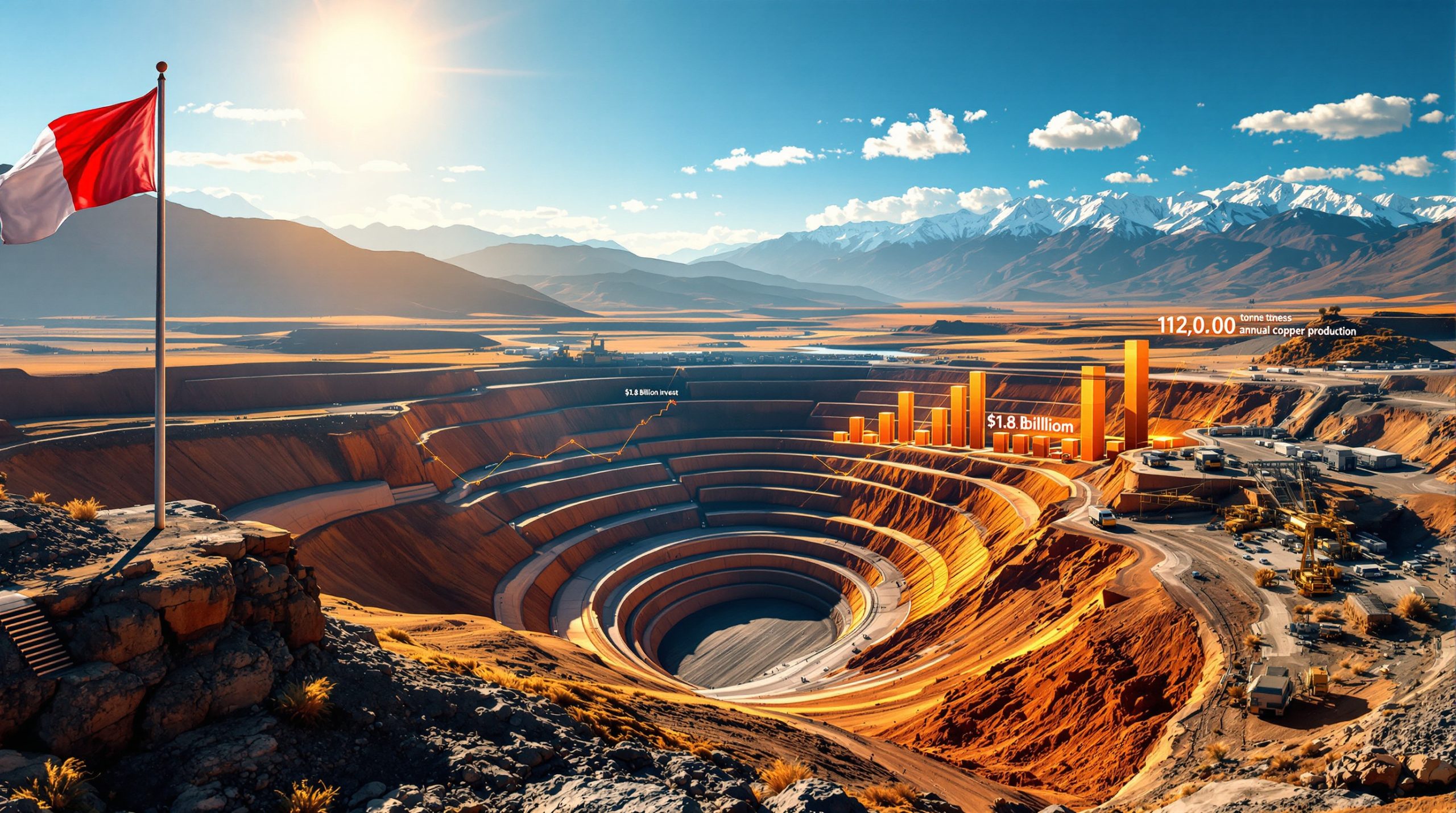Chinese Strategic Expansion into Indonesian Aluminum Production
Chinese aluminum expansion in Indonesia is fundamentally transforming the global aluminum landscape as Chinese companies strategically pivot toward Indonesian production facilities. This strategic repositioning stems from China approaching its domestic production capacity ceiling of 45 million tons annually, coupled with increasingly stringent environmental regulations that limit mainland expansion opportunities. Furthermore, this shift represents a broader mining industry evolution that prioritises geographical diversification.
Indonesia presents an exceptional convergence of advantages that make it the premier destination for Chinese aluminum investment. The archipelago nation possesses the world's largest bauxite reserves, ensuring long-term raw material security for aluminum production. Additionally, Indonesia's abundant coal-fired energy infrastructure provides the massive electricity requirements essential for energy-intensive aluminum smelting operations.
The economic fundamentals further strengthen Indonesia's appeal. Competitive labour costs significantly reduce operational expenses compared to Chinese domestic production, whilst government policies actively encourage foreign investment in downstream processing industries. This regulatory environment creates a business-friendly atmosphere that facilitates rapid industrial development and capacity expansion.
Major Chinese Companies Driving Industrial Transformation
Tsingshan Holding Group's Comprehensive Market Approach
Tsingshan Holding Group has emerged as the most aggressive player in Indonesian aluminum expansion, leveraging its existing nickel operations to create integrated metal production facilities. The company's Xinfa-Tsingshan Juwan Smelter in Weda Bay is approaching operational status, representing a significant milestone in Chinese overseas aluminum production.
Simultaneously, Tsingshan's Taijing facility within the Indonesia Morowali Industrial Park is advancing through construction phases, with both projects targeting a combined annual capacity exceeding one million tons. This integrated approach allows Tsingshan to capitalise on existing infrastructure investments whilst diversifying its metal production portfolio across multiple commodities.
Strategic Partnerships and Market Entry Models
China Hongqiao Group has adopted a collaborative approach, establishing strategic partnerships with Indonesian industrial conglomerates rather than pursuing independent development. This partnership model facilitates faster market entry whilst building local expertise through technology transfer initiatives.
The company focuses on coastal locations that optimise logistics for both raw material imports and finished product exports. This geographic positioning reduces transportation costs whilst ensuring efficient access to international markets, particularly in Southeast Asia and the broader Asia-Pacific region.
Phased Development Strategies
Shandong Nanshan Aluminum's Adaro-Lygend Kaltara project in North Kalimantan exemplifies the phased development approach many Chinese companies are adopting. The project targets 1.5 million tons of annual capacity across three distinct development stages, with completion timelines extending through late 2025.
This phased methodology allows companies to manage capital expenditure whilst gradually scaling production capacity. It also provides flexibility to adjust expansion plans based on market conditions and operational performance during initial phases.
Production Growth Metrics and Market Impact
The scale of Indonesian aluminum expansion becomes clear through production and export data. According to Trade Data Monitor, Indonesia exported 325,293 tons of aluminum between January and August 2024, representing a remarkable 67% increase from the previous year. This compares to just 10,713 tons exported during the first eight months of 2023.
| Production Timeline | Capacity (Tons) | Market Share | Growth Rate |
|---|---|---|---|
| 2024 (Jan-Aug) | 325,293 | ~2% | +67% |
| 2025 Projection | 815,000 | ~3% | +150% |
| 2026 Forecast | 1,600,000 | ~6% | +96% |
| 2027 Target | 2,500,000 | ~8% | +56% |
These projections indicate Indonesia could achieve approximately fivefold production growth by the end of the decade, transforming from a minor player to one of the world's leading aluminum producers. The country's trajectory positions it to become the third-largest global aluminum producer by 2030, significantly impacting bauxite project benefits globally.
Global Market Surplus Projections and Price Dynamics
Goldman Sachs forecasts that Indonesian production expansion will create significant global aluminum market surpluses. The investment bank projects a surplus of 1.5 million tons in 2026, expanding to 2 million tons in 2027. This oversupply scenario directly results from Indonesian capacity additions filling global supply gaps previously expected from Chinese production constraints.
Current aluminum pricing reflects market anticipation of these supply changes. Three-month London Metal Exchange contracts trade around $2,873 per metric ton, but Goldman Sachs estimates prices could decline to $2,350 per metric ton by the fourth quarter of 2026. Importantly, this projected price level remains above the 90th percentile of estimated global smelter costs, ensuring most aluminum producers maintain profitability despite lower prices.
Market Rebalancing Timeline
Macquarie provides a slightly different perspective, projecting a 390,000-ton surplus in 2025 before longer-term deficits emerge as Chinese capacity constraints tighten and global demand continues expanding. This analysis suggests the current surplus period may be relatively brief, potentially lasting only through the mid-2020s.
The market rebalancing reflects the complex interplay between Chinese capacity limitations, Indonesian production ramp-up, and evolving global aluminum demand across transportation, construction, and packaging sectors. Moreover, these developments coincide with US aluminium tariffs affecting global trade patterns.
Supply Chain Transformation and Strategic Implications
Geopolitical Diversification Benefits
Indonesian aluminum expansion creates crucial supply chain diversification opportunities for global manufacturers. Rather than relying predominantly on Chinese domestic production, companies can access competitively priced aluminum from Indonesian facilities whilst reducing geopolitical concentration risk.
This diversification proves particularly valuable for industries requiring consistent aluminum supplies, including:
- Automotive manufacturing: Access to lower-cost aluminum for vehicle lightweighting initiatives
- Aerospace production: Enhanced supply security for critical aircraft components
- Construction materials: Reduced input costs for building and infrastructure projects
- Consumer packaging: Improved margins from decreased aluminum can and container costs
Trade Flow Redistributions
The emergence of Indonesia as a major aluminum producer will likely redirect traditional trade flows. Southeast Asian countries may increasingly source aluminum from Indonesian facilities rather than importing from China or other established producers. This shift could affect shipping routes, logistics costs, and regional pricing dynamics.
European and North American markets may also adjust sourcing strategies, particularly if Indonesian producers offer competitive pricing combined with reliable supply commitments. Chinese firms are driving significant aluminium expansion in Indonesia, fundamentally reshaping established aluminum supply chains. Consequently, this development aligns with broader commodity trading trends that emphasise supply source diversification.
Technical Production Challenges and Infrastructure Requirements
Energy Infrastructure Scaling
Aluminum smelting requires enormous electricity consumption, typically consuming 13-15 megawatt-hours per ton of primary aluminum produced. Indonesian expansion depends on securing adequate power generation capacity, predominantly through coal-fired power plants that provide cost-effective electricity.
Key infrastructure developments include:
- Dedicated power generation facilities for major smelting operations
- Transmission infrastructure connecting remote smelter locations to power sources
- Backup power systems ensuring continuous operations during maintenance periods
- Grid integration projects balancing industrial demand with residential electricity needs
Transportation and Logistics Networks
Efficient aluminum production requires sophisticated logistics networks for both raw material inputs and finished product distribution. Indonesian projects must develop:
- Port facilities capable of handling bulk bauxite shipments and aluminum exports
- Railroad connections linking production sites to major transportation hubs
- Road infrastructure supporting heavy industrial equipment and material transport
- Storage facilities providing adequate inventory management capabilities
How Does Indonesian Expansion Compare Globally?
Indonesia's aluminum expansion occurs alongside capacity additions in other regions, each driven by distinct competitive advantages:
| Region | Capacity Addition | Primary Advantage | Timeline |
|---|---|---|---|
| Indonesia | +2.2 million tons | Resource access, Chinese investment | 2025-2027 |
| Middle East | +800,000 tons | Abundant cheap energy | 2024-2026 |
| North America | +400,000 tons | Nearshoring, trade policy | 2025-2028 |
The Middle East leverages abundant natural gas resources to power aluminum smelting at extremely low energy costs. However, these projects typically require significant infrastructure investment and face longer development timelines compared to Indonesian expansions that benefit from existing industrial zones.
North American capacity additions focus on nearshoring trends and trade policy considerations, particularly serving automotive and aerospace industries seeking supply chain proximity. These projects generally target higher-value aluminum grades rather than commodity production.
Risk Factors and Market Uncertainties
Oversupply Scenarios and Profitability Concerns
The rapid scale of Indonesian expansion raises concerns about potential market oversupply that could pressure aluminum prices below profitable levels for some producers. If multiple projects achieve full production simultaneously, the resulting supply surge might exceed demand growth projections.
Particularly vulnerable are higher-cost producers in regions with expensive electricity or inefficient operations. These facilities might face closure or curtailment if Indonesian production drives sustained price reductions beyond current projections.
Environmental and Regulatory Challenges
Large-scale aluminum production creates significant environmental impacts, including:
- Carbon emissions from coal-fired electricity generation
- Air quality concerns in industrial areas surrounding smelting facilities
- Water consumption requirements for cooling and processing operations
- Waste management challenges from aluminum production byproducts
Indonesian environmental regulations may tighten as production scales, potentially increasing compliance costs or limiting expansion permissions for future projects. However, this challenge also presents opportunities for decarbonisation benefits through cleaner production technologies.
Currency and Financial Risks
Chinese companies investing in Indonesian aluminum face currency exchange risks that could affect project returns. Indonesian rupiah fluctuations against the Chinese yuan impact both capital investment costs and ongoing operational profitability.
Additionally, financing large-scale industrial projects requires substantial capital commitments over multi-year development periods. Interest rate changes, commodity price volatility, or shifts in Chinese government policy toward overseas investment could influence project viability.
Long-Term Industry Evolution and Investment Implications
Structural Market Transformation
Indonesian aluminum expansion represents a fundamental shift from concentrated Chinese production toward geographically distributed global capacity. This transformation enhances market resilience whilst creating new competitive dynamics among aluminum producers worldwide.
The emergence of Indonesia as a major producer will likely influence global aluminum trading patterns, pricing mechanisms, and supply contract structures. Market participants must adapt strategies to accommodate new supply sources and evolving competitive landscapes.
Technology Transfer and Local Development
Chinese investment in Indonesian aluminum production facilitates significant technology transfer that builds local industrial capabilities. Indonesian workers gain expertise in advanced smelting technologies, quality control processes, and industrial management practices.
This knowledge transfer creates foundation for potential future expansion beyond Chinese-led projects. Indonesian companies may eventually develop independent aluminum production capabilities, further diversifying global supply sources.
Integration with Regional Development Strategies
Indonesian aluminum expansion aligns with broader national economic development objectives focused on downstream processing of natural resources. Rather than exporting raw bauxite, the country captures additional value through domestic aluminum production and potential further processing into finished products.
This strategy could extend to aluminum fabrication, component manufacturing, or specialised alloy production that serves regional markets in Southeast Asia and beyond. Chinese investment is expected to transform Indonesia's aluminum industry significantly over the coming decade.
The transformation of Indonesia's aluminum industry through Chinese investment represents one of the most significant shifts in global aluminum production since China's own rapid expansion in the early 2000s. Chinese aluminum expansion in Indonesia fundamentally alters traditional supply chains and competitive dynamics. Market participants must carefully monitor production ramp-up timelines, demand growth patterns, and evolving competitive dynamics to navigate this period of substantial industry change.
Disclaimer: This analysis is based on publicly available market data and industry projections. Aluminum prices, production timelines, and investment outcomes involve inherent uncertainties. Readers should conduct independent research and consult qualified professionals before making investment decisions related to aluminum markets or Indonesian industrial projects.
Could This Aluminium Boom Create Your Next Investment Opportunity?
Discovery Alert's proprietary Discovery IQ model delivers real-time alerts on significant ASX mineral discoveries, including bauxite and aluminium-related opportunities that could benefit from Indonesia's expanding production landscape. Explore historic discovery returns and begin your 30-day free trial today to position yourself ahead of the market as global supply chains transform.




